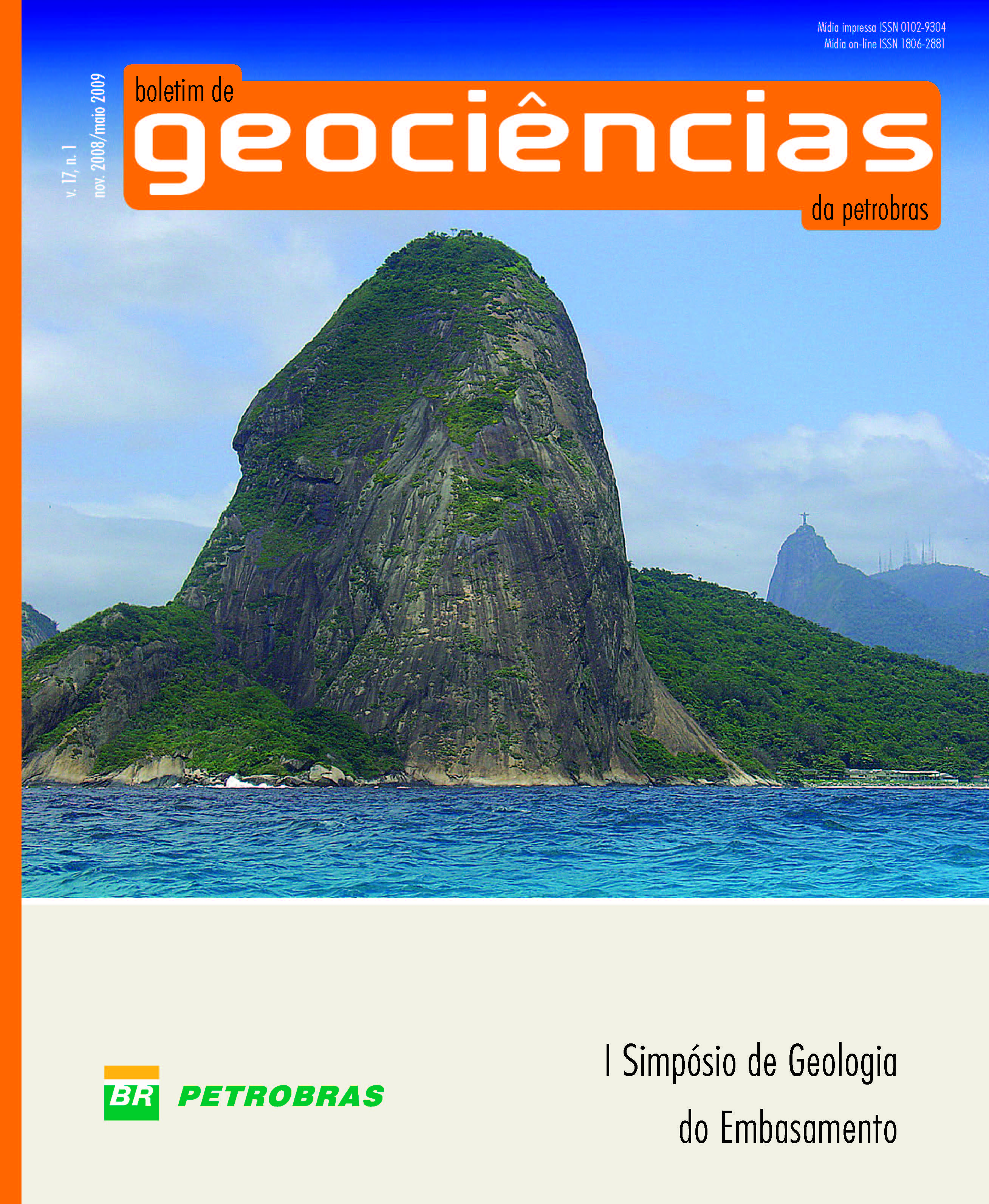The basement of Recôncavo-Tucano-Jatobá basins – an overview from the geologic map of Brazil 1:1,000,000 scale
Keywords:
Recôncavo-Tucano-Jatobá Rift System, basement geology, tectonic, stratigraphyAbstract
The Recôncavo-Tucano-Jatobá Rift System has the São Francisco and Borborema provinces as its basement, the spatial arrangement of which controlled the rift’s evolution and architecture. The basement of the Recôncavo Basin and Southern
and Central Tucano sub-basins are represented by the Eastern Bahia belt terranes (Northeastern São Francisco Province), raised during the Paleoproterozoic (Rhyacian) orogeny and structured by N-S (intracontinental branch) and NE-SW shear zones (coastal branch) that controlled the configuration of the Tucano and Recôncavo rifts orientation, respectively. The intracontinental branch is the result of the amalgamation of Archean blocks/microplates, comprising granulitic and migmatitic orthogneisses (Serrinha, Itabuna-Curaçá, Jequié e Salvador-Ilhéus), while the coastal branch is composed of Paleoproterozoic magmatic arcs. Although the Northern Tucano Sub-basin has a general N-S trend, its internal architecture is distinct from the basins in the south, because it evolved close to the São Francisco Province and Meridional Subprovince (Borborema Province) boundary. This subprovince has a NW-SE to NE-SW structural trend, which is the result of a Neoproterozoic compressive tectonic event (Brasiliano Orogeny) that thrusted these terranes over the São Francisco Province. The NE-SW structural trend of the subprovince also controlled the Jatobá Basin rifting, with the Pernambuco Lineament as its northern edge. The Meridional subprovince is subdivided into the Pernambuco-Alagoas and Canindé-Marancó terranes and the Sergipano Fold Belt. The two terranes are composed of orthogneiss complexes and metavolcanosedimentary sequences, while the fold belt is made up of siliciclastic and carbonatic metamorphic rocks. The Estancia Cratonic Cover is formed by siliciclastic and carbonatic rocks deposited over the São Francisco Province, during the Neoproterozoic. The Palmares and Juá molassic basins evolved over the Estancia Cratonic Cover and the Sergipano Fold Belt, respectively, during the Cambrian to Ordovician. These sedimentary rocks are the basement of
the Southern to Central Tucano sub-basins. Studies concerning the basement of the Recôncavo, Tucano and Jatobá basins have brought a great amount of data in the last decades and are used for provenience and chemical-stratigraphic studies of the
sediments. Additionally, aeromagnetic, radiometric and gravimetric data are helpful for structural studies and basin modeling.
Downloads
Published
Issue
Section
License
Copyright (c) 2009 Boletim de Geociências da Petrobras

This work is licensed under a Creative Commons Attribution 4.0 International License.
This license enables reusers to distribute, remix, adapt, and build upon the material in any medium or format, so long as attribution is given to the creator. The license allows for commercial use.




